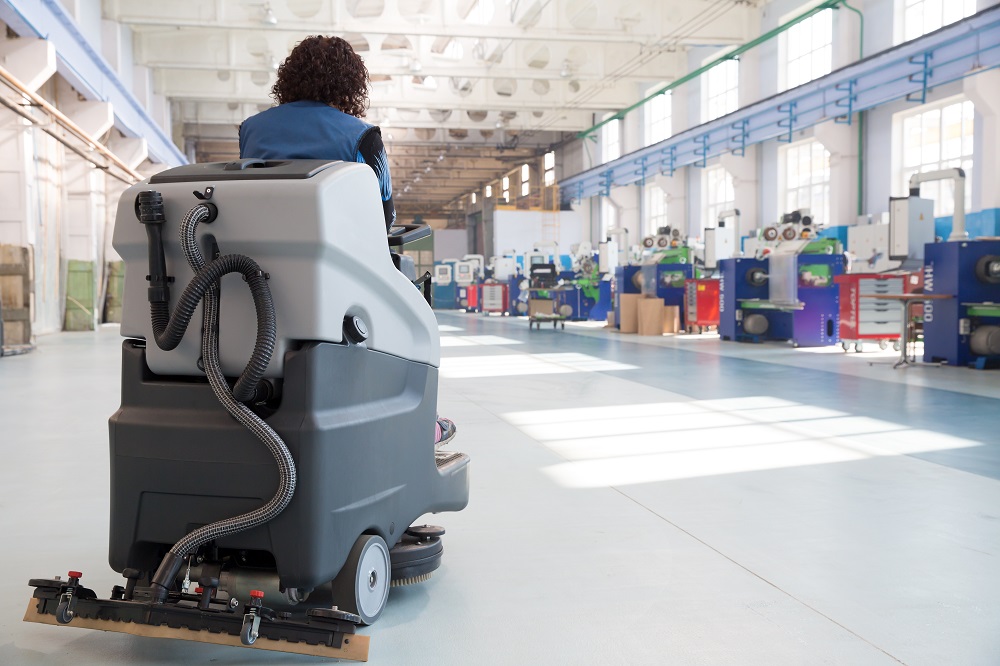Manufacturing is messy — and sometimes, it can feel impossible to avoid all of that dirt, grime, and other contaminants in your workshop. Regular and thorough cleaning doesn’t just make a space more pleasant. It’s a necessity for safety, and maintaining machine efficiency, high-quality part finishes, and worker health.
In this short guide, we’ll cover the basics of keeping your job shop as clean as possible, plus how proper coolant maintenance can keep your machines and workspace from getting too dirty.
Floors and Surfaces

Floors and work surfaces are the most high-contact points in a workshop, so it’s natural that they collect the most dirt. Mist and spills generated during machine operation eventually settle somewhere, from the floor to walls to tabletops. Workers then inadvertently track this across the shop as they go about their daily routines, along with all of the dirt and other contaminants brought inside from outside the shop.
Master STAGES™ CLEAN F2™ is a super concentrate specifically formulated for use in automatic floor scrubbers and general purpose cleaning. It’s versatile enough for everyday use, and for multi-purpose use on machines and other surfaces, too. The solution is also strong enough to remove even the toughest grime, though it’s gentle enough to avoid peeling paint or coating off surfaces.
Equipment and Cutting Tools

Coolant, mist, metal fines, splashing fluid, and even tramp oil, can cause cutting tools, machines, and floors to collect serious grime. If this goes on without proper cleaning, it can create safety issues and keep machines from running as expected.
Master STAGES™ Task2™ APC is an industrial-strength, all-purpose cleaner specially designed for tough dirt and soils that build up in shop environments. Plus, Task2 is formulated to avoid breaking down TRIM® cutting fluids, so the environmentally friendly solution is safe to use directly on cutting tools and machinery. If some of it accidentally enters the coolant sump, it won’t harm metalworking fluid either.
Machine Sumps
If a machine will be out of use for an extended period of time, this is a great opportunity to conduct a full clean-out. However, if too much tramp oil has collected in the sump, or the coolant is due for a change, it may be necessary to run through this process anyway. Failure to do so may lead to increased residues, smoke, and odors within a facility, as well as potential corrosion on tools, machines, or finished parts.
A full sump clean-out is relatively simple, though it can be time-consuming and labor-intensive. When done properly following your coolant manufacturer’s recommendations, and with a product such as Master STAGES™ Whamex™ or Whamex XT™ added 24-48 hours ahead of time, it can make the cleanout easier and even lengthen the period between cleanouts. In addition to cutting through the grime that’s collected throughout the equipment, it can also help remove sludge in your coolant tank and make your cleanout more effective.
Clean Coolant = Cleaner Shop

Cutting fluid makes a mess when it splashes onto floors and equipment — and it can pose a safety hazard if the floor is slippery. Cleaning coolant spills with proper floor cleaning methods and products is critical. Customers should strive for clean work areas and clean coolant. Poorly managed coolant won’t just suffer from a shorter sump life, it can also grow bacteria that can impact other parts of your facility including air quality.
You should maintain recommended fluid concentrations in the sump. Promptly remove tramp oil with equipment like XYBEX® Scroungers and Skimmers, so it doesn’t have a chance to become emulsified in the coolant. A coolant system can help your cutting fluid stay cleaner for longer periods too, minimizing the frequency of machine clean-outs and maximizing sump life, tool life, and labor efficiency.
For more strategies on coolant management and keeping your shop clean, schedule a site visit by Master Fluid Solutions reps. Contact us at +1 800-537-3365 or email us at [email protected] to get started.

